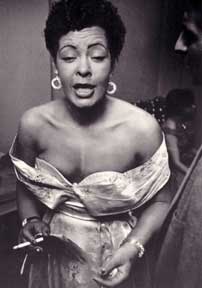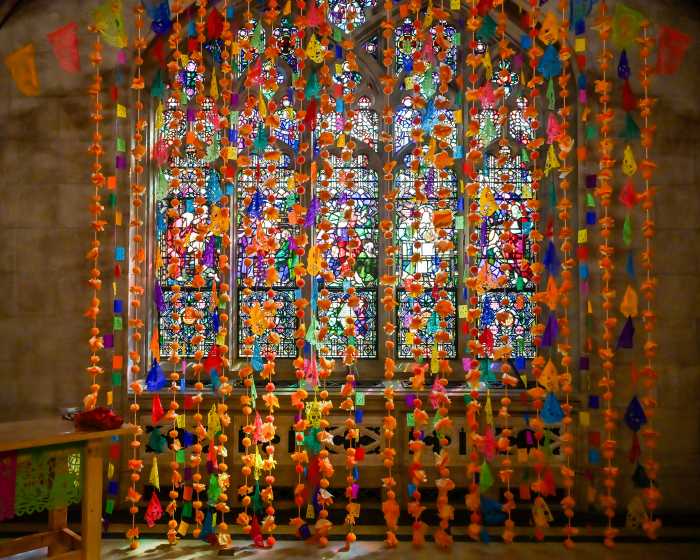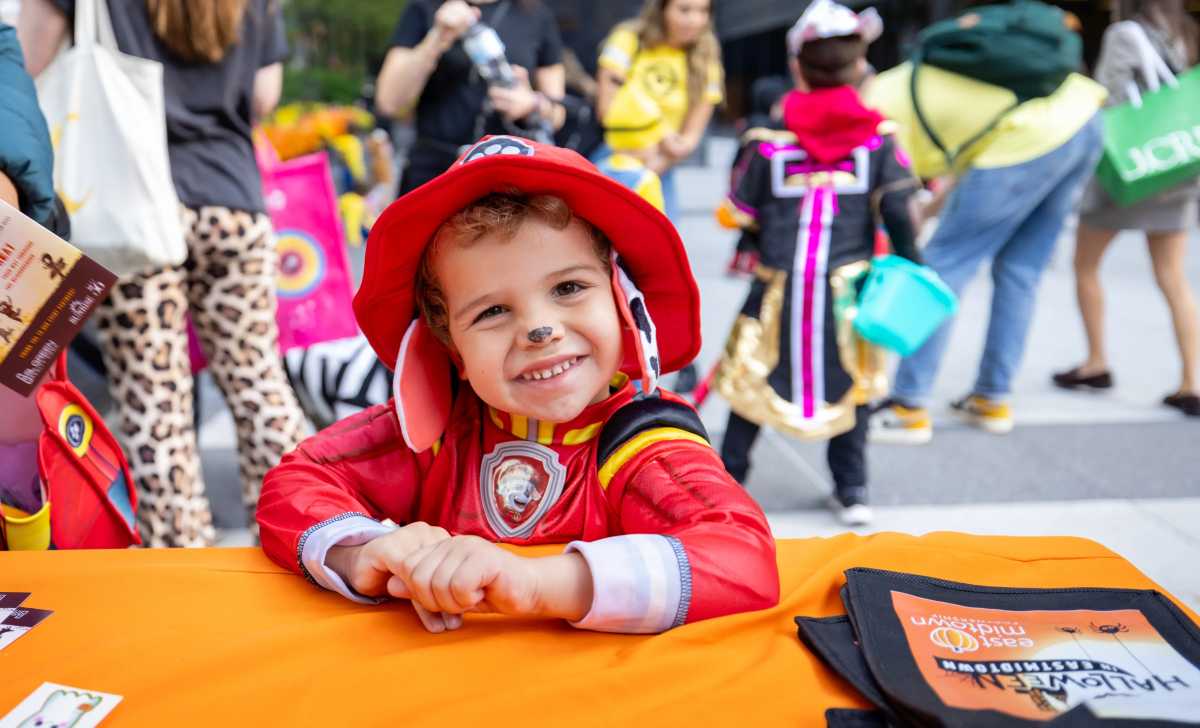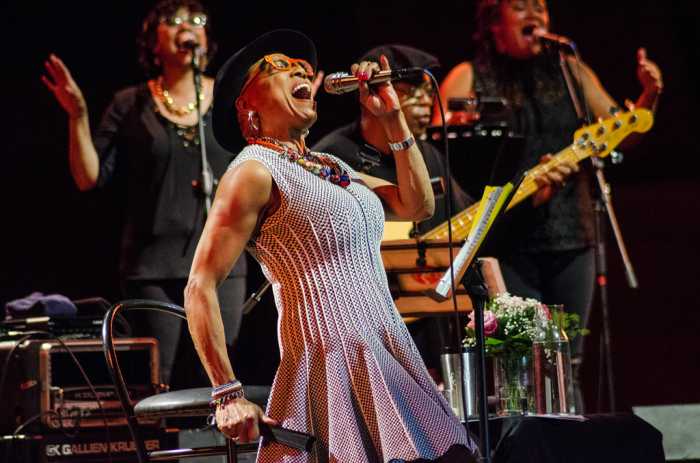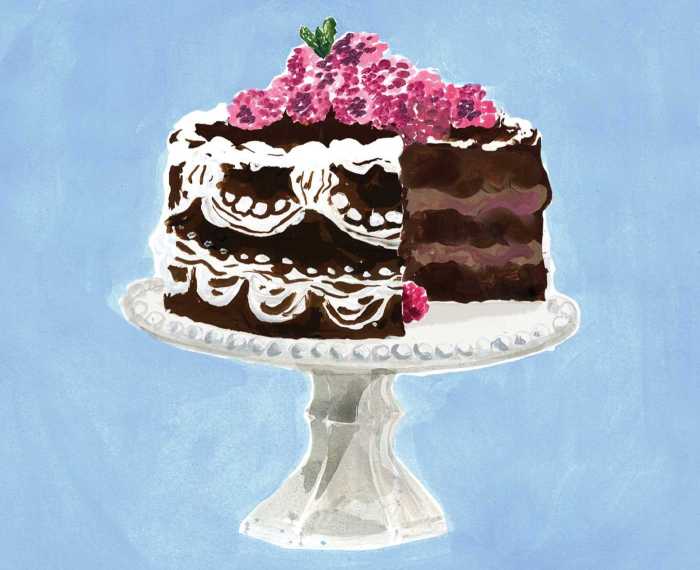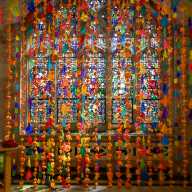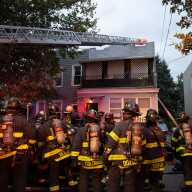Despite the current controversy, devote
your next free afternoon to the Brooklyn Museum of Art’s latest
exhibit, "Committed to the Image: Contemporary Black Photographers."
The museum’s absurdly ambitious show features
black-and-white and color photographs by a staggering 94 photographers.
The images cover every conceivable subject matter and dozens
of techniques. The show contains the political hot potato of
Renee Cox’s feminist interpretation of the Last Supper, which
has Mayor Rudolph Giuliani in a righteous uproar, but it truly
is a critical success.
"Committed to the Image" is an
interesting follow-up to "Passages: Photographs in Africa
by Carol Beckwith and Angela Fisher" – spectacular color
photographs taken all over Africa by two white women. "Committed
to the Image" is even more exciting because of the sheer
number of talented photographers whose works are contained in
it.
The museum’s curator of photography, Barbara
Head Millstein, tackles the exclusive nature of the exhibit immediately.
The show, which features living black American photographers,
was curated by Millstein and three photographers (Anthony Barboza,
Beuford Smith and Orville Robertson, publisher and editor of
the journal Fotophile).
"I am sure we overlooked some notable
artists," writes Millstein in the exhibition’s opening statement.
"There were also a few who declined to take part in an exhibition
devoted exclusively to black photographers."
As visitors walk into the seemingly infinite
show, which stretches for rooms and rooms on end, they are initially
greeted by projections of details of Tony Gleaton’s arresting
portrait "Black Girl, White Flowers, Beliz, Central America."
The young girl’s dark face is accented with brilliant white petals
over each ear. A shadow obscures – and at the same time reveals
– the side of her face closest to the camera. An enigma of a
smile plays at her lips, and her watchful eyes are turned towards
the viewer.
Gleaton’s portrait is a metaphor for the
show, which makes a point of identifying the exhibition’s voyeurs:
the photographers, the curators and you – the viewer.
The show then unfolds – not chronologically,
but thematically, exploring "The Street," "Religion,"
"Family" and more. Each photographer is represented
by just two works, which are not always hung near each other.
The works run the gamut from staged photographs to photojournalism,
black-and-white to color, and photomontages to computer-generated
works.
The decision to hang the works thematically
barrages the viewer with one stunning image after another – by
different artists with varied techniques. There is more on display
here than can be comprehended in one viewing.
The museum’s full-disclosure approach extends
beyond the curator’s note to the photographers. The Brooklyn
Museum invited the artists "to speak for themselves by providing
explanatory statements with their works."
Hugh Bell’s "Billie Holiday, Carnegie
Hall Dressing Room" (1956) captures the singer with her
guard down. Her eyes are half-shuttered, her strapless dress
slipping down, her brow furrowed and her mouth open mid-speech.
This realism is not flattering but full of stinging truth. In
his note, Bell says his photo "shows [Holiday] distracted
and addicted."
Unfortunately, Cox’s 1996 "Yo Mama’s
Last Supper," which has garnered the most media attention
thus far, is the most cliche work in the exhibit. Like Sam Taylor-Wood’s
"Wrecked," a 1996 color print from the 1999 "Sensation"
exhibit, there are clothed figures seated at a table. The photographers
only shared innovation is a nude female figure standing in for
Jesus.
Portraits
There are many arresting portraits in the
exhibit, primarily of women. Delphine Fawandu’s classical female
nudes are set in gritty settings. An undulating, slender torso
perches on the side of a claw-footed bathtub – her back to the
viewer. The human figure’s glistening skin, her perfect form,
transcends the bathroom setting of exposed pipes and dirty corners.
Roland Freeman’s portrait of Nellie Morgan
and her granddaughter in "Bicentennial Outfits Made by Mrs.
Morgan" is sheer bliss. At first it’s a seemingly happy
portrait of a pleased grandmother and granddaughter, but the
girl’s quizzical eyebrows, appearing to question the meaning
of this absurd – but sweet – patriotic fervor, bring the photo
back from the edge of a saccharine abyss and into telling social
commentary.
Adger Cowans’ "P.B. Nude" is
a brilliant piece of minimalism, akin to a Brancusi sculpture.
The figure is bent in half, isolating the form of a curving,
sloping, peach-shaped silhouette of a woman’s buttocks.
Other compositions in the show also hark
back to the memorable shock value of "Sensation."
One of Anthony Barboza’s provocative images,
"Untitled" (1996) depicts a black man, with minstrel-like
white paint on his lips and splayed palms, lying on his back
on black sheets. But it’s the exaggerated phallus poking through
the sheets that arrests the viewer’s attention.
Family life
Ronald Barboza’s works, on the other hand,
have a less staged quality. His "Nanna (Emily Barrows)"
depicts an elderly woman, holding a portrait of herself in her
younger days, while blankets, a nearby plastic cup and straw
and a box of medicine hint at grave illness.
Gerald Cyrus’ photographs belie an anthropologist’s
approach to middle-class America, much like British peer, Richard
Billingham’s photos of his own family, also shown in "Sensation."
In one image Cyrus captures a child tearfully
crouched in the kitchen, while a woman holds a baby in the foreground.
In another shot, a family sits at dinner, with cans of Budweiser
at their plates and the television set silently blaring behind
them. Cyrus’ work is searing, truthful and revealing.
Celebrities
"Committed to the Image" includes
an array of celebrity portraits, including Ernest Withers’ famous
"Martin Luther King Jr. Confronted by the Police at Medgar
Evers’ Funeral"(1963).
Don Camp’s painterly portraits of prominent
men, "Man Who Writes, John Edgar Wideman" and "Man
Who Hears Music, Andre Raphel Smith" are incredibly intimate.
(Camp told Go Brooklyn he keeps his camera just 10-inches from
his subject).
In the "Man Who Writes," the
casein pigment tears at the paper, leaving texture and drips
like teardrops near Wideman’s eyes. The portraits came about
after the artist became infuriated by the idea of the "extinction
of the black male." He said he was provoked to "catalog
them if we were going to be extinct." The resulting series
is a triumph of both technique and subject matter.
A portrait of singer Erykah Badu was taken
when the photographer, Imari DuSauzay, was 71 years old. This
photo – a collaboration generations apart – captures the pop
star with her towering headdress in a weary pose, her forehead
resting on her hand.
Oggi Ogburn’s "World Champions"
(1986) features Michael Spinks, Jersey Joe Walcott, Smokin’ Joe
Frazier, Muhammad Ali and Sugar Ray Leonard in a sobering group
portrait. The collection of boxers in their serious suits with
serious faces stand at Joe Louis’ grave with their hands clasped.
Most of the "Committed to the Image"
work was created in the ’80s and ’90s and many have a staged,
cinematic quality to them. Ron Campbell’s "Smokin’"
reminded me of Prince’s "Purple Rain" album cover with
its figure astride a motorcycle, surrounded by a crowd of people
obscured by the bike’s swirling exhaust.
Politics
In addition to Withers’ King portrait,
there are many political images both humorous and chilling, like
Omar Kharem’s 1966 "On the Beat" capturing several
police officers. This nocturnal silhouette gives the square-jawed
officers an unsettling anonymity – depending on your point of
view, of course.
Reginald Jackson’s "Ghana: Things
Go Better?" (1970) is a successful, satirical look at colonialism.
The locals walk on bare feet, balancing baskets on their heads,
while an enormous billboard advises them that "things go
better with big, big Coke."
Of course no exhibit of black photographers
would be complete without the multi-talented photographer-author-filmmaker
Gordon Parks. The curators chose his classic 1942 "American
Gothic" – a cleaning woman, buttons missing from her dress,
framed between a broom and a mop, standing in front of an American
flag.
Jeffrey Henson Scales’ 1993 version of
"American Gothic" is on display too, but his is a hilarious,
Technicolor portrait of a black family. The father, decked out
in hunting gear, is seated in his wood-paneled living room –
with a shotgun on his lap. The absurdity of the formal pose is
reinforced by his beaming wife and three children standing around
him. Perfect satire by a photographer who is also photo editor
for the New York Times’ House & Home section.
"Committed to the Image: Contemporary
Black Photographers" reminds us of how many talented black
photographers are working today, and more importantly, just how
few black photographers’ have become household names.
The exhibit serves as an important reminder
of how far we have yet to go to integrate the collections of
art museums and art history textbooks. Take advantage of this
rare group show.
"Committed to the Image: Contemporary
Black Photographers" is on view at the Brooklyn Museum of
Art [200 Eastern Parkway, (718) 638-5000] now through April 29,
2001. Admission is $4, $2 students and seniors. The museum is
offering public programs in conjunction with the exhibition.
Call for details.


